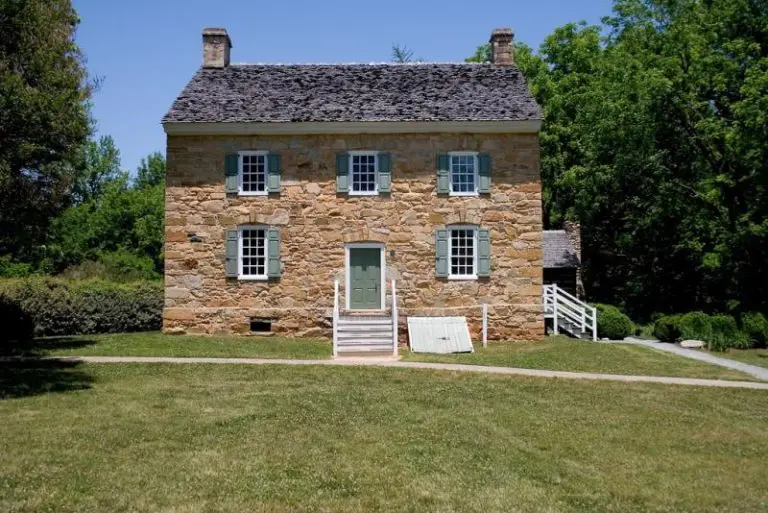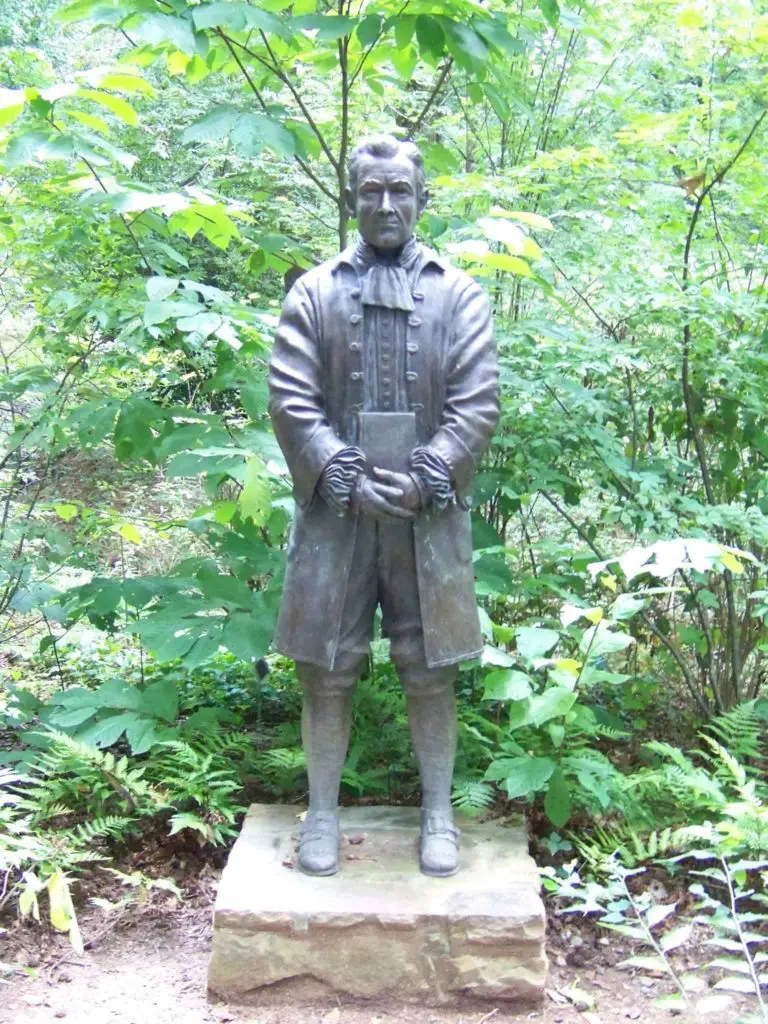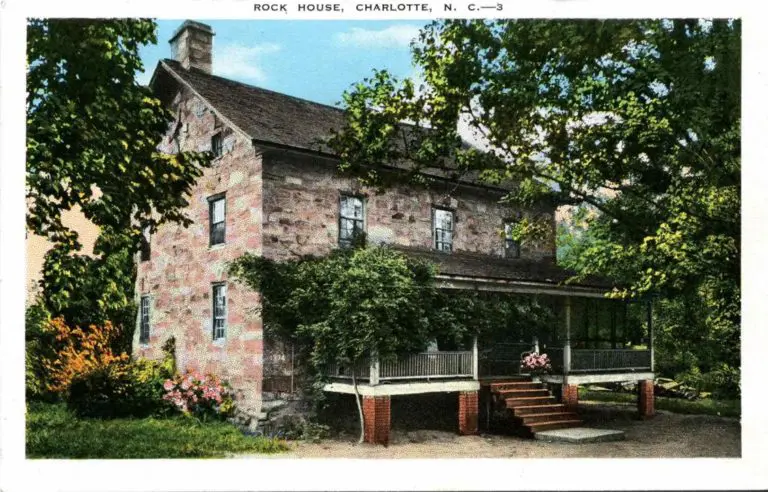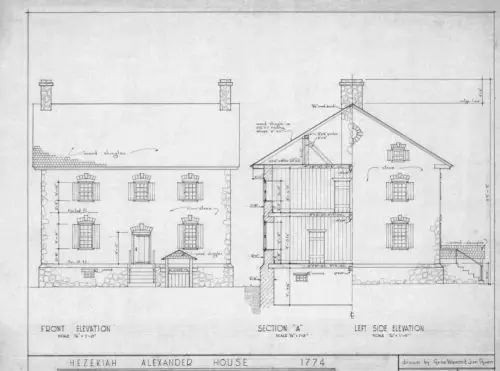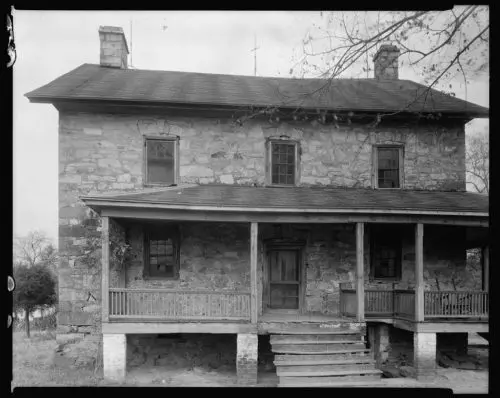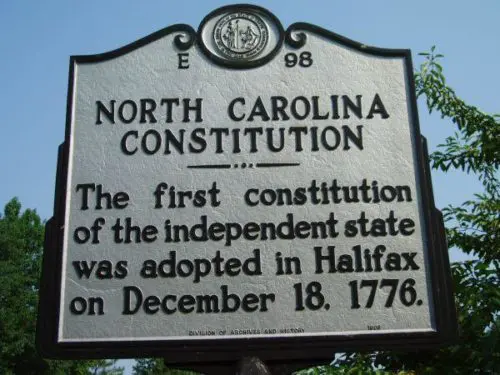The Hezekiah Alexander Rock House, located at 3500 Shamrock Drive, is the oldest surviving house in Mecklenburg County, constructed in 1774. That home is possibly the only surviving structure belonging to a framer of North Carolina’s first constitution.
Hezekiah Alexander and his family were of Scots-Irish ancestry and initially lived in Maryland before moving to Mecklenburg County, North Carolina, in 1767. When Mecklenburg County was formed in 1762, there were only 777 residents. During the fall and winter of 1765, thousands of wagons flowed into North Carolina via the Great Wagon Road that ran from Philadelphia to the North Carolina border, causing Mecklenburg’s population to swell.
By 1767, 1,600 people lived in Mecklenburg County. Hezekiah Alexander made several land purchases before moving to North Carolina including 300 acres of land in 1766. In 1769, he expanded his property by buying an adjoining 300-acre tract of land, making his total property 600 acres.
Hezekiah Alexander had many profitable businesses, beginning with his work as a blacksmith. He traded directly with merchants in Charleston, South Carolina. He also carried his neighbors’ goods to trade in Charleston, earning commissions for these transports. Smart business practices like this one quickly propelled Alexander to become one of the most prosperous men in Mecklenburg County. He was appointed a county magistrate for life by Governor William Tryon in 1768. By age 40, Alexander had been appointed Justice of the Peace, one of the most powerful positions in colonial America.
Hezekiah Alexander, Thomas Polk, and other members of the county’s elite moved to start a college that would provide the county’s youth with a liberal arts education. They named the school Queen’s College in honor of Queen Charlotte, hoping the royal governor or King George III would support the school’s establishment. In those days, any incorporation, like the founding of Queen’s College, had to be passed by the legislature but ultimately could be vetoed by the royal governor or monarch. By 1771, Queen’s College was open to students but had yet to be approved by the royal governor or King George III.
The residents of Mecklenburg were stunned on June 28, 1773, two years after George III had vetoed their request to open Queen’s College. The King also vetoed an act that allowed Presbyterians to be married by their ministers. It took two years for those acts to work their way through the English bureaucracy. Mecklenburg colonial residents were furious about George III’s decision.
The King’s decisions pushed Hezekiah Alexander over the edge. Alexander gave his support to the Continental Congress. He became a member of Mecklenburg’s Committee of Safety from 1774-75. A Committee of Safety was essentially a shadow government of Patriots that took control of the Thirteen Colonies away from their colonial governments.
The Rock House was completed in 1774 and is roughly 5,000 square feet. The stone walls of the Rock House are two feet thick at the widest part and were built with stone quarried from the 600-acre property. The construction was most likely completed through the use of enslaved labor.
Through census data and other historical records, we know Hezekiah Alexander and his family enslaved at least 17 people. Alexander purchased enslaved people who were cheaper because of their age, sex, or reputation instead of purchasing enslaved men who were field hands in their prime. He purchased a “boy nine years old,” “a girl eighteen years old,” and “a runway Negro.”
Alexander’s wealth and influence meant he was chosen to be a Council member. The Council raised money for patriot forces and determined civil and military policies. This Council became a vital part of North Carolina’s revolutionary success.
The Declaration of Independence had been inked and signed, and the Council called for a congress to meet in Halifax, North Carolina. Hezekiah Alexander was a member of this congress; they were tasked with creating a permanent government for the State of North Carolina. Alexander was one of the framers of the State’s first constitution and bill of rights. He is also believed to have signed the Mecklenburg Declaration of Independence. Hezekiah Alexander’s Rock House still stands in Mecklenburg County and is a part of the Charlotte Museum of History.


